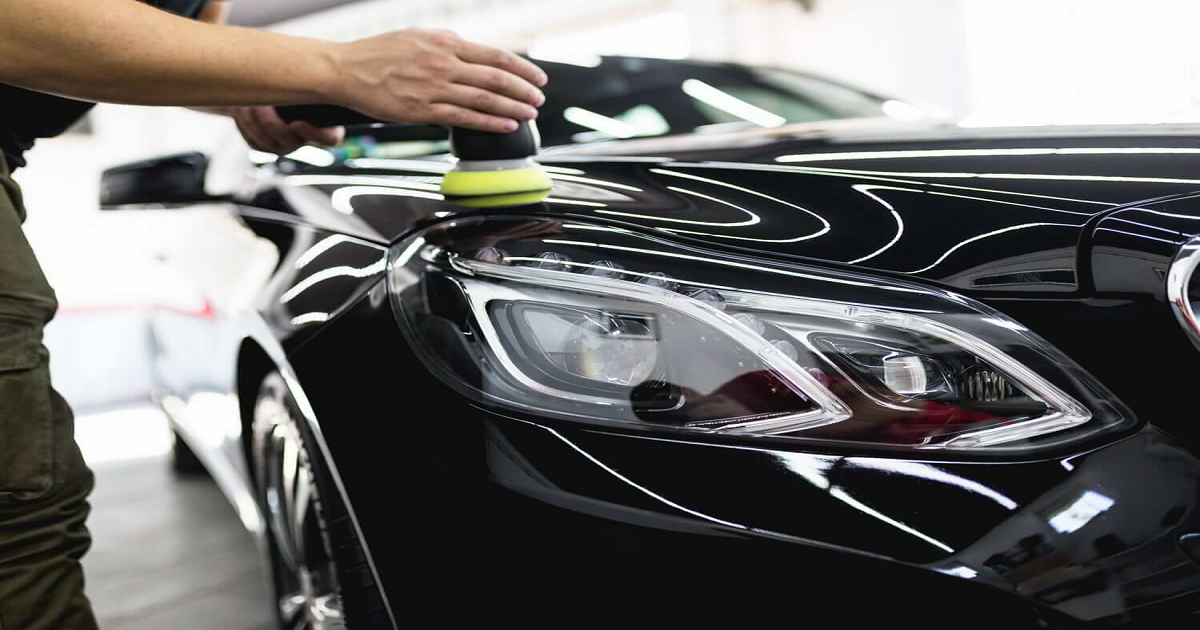In the world of automotive care, a revolutionary advancement has taken center stage – ceramic coating. As car enthusiasts and meticulous owners seek ways to protect and enhance the aesthetic appeal of their vehicles, ceramic coating has emerged as the go-to solution. This ultimate guide aims to unravel the mysteries surrounding ceramic coating, providing a comprehensive understanding of its benefits, application process, and long-term impact on your cherished vehicle.
What is Ceramic Coating?
Ceramic coating, also known as nano-ceramic coating, is a liquid polymer applied to the exterior surfaces of a vehicle. The formulation of this coating involves the bonding of microscopic particles to the factory paint, creating a protective layer. Unlike traditional wax or sealant applications, ceramic coatings provide a semi-permanent solution that lasts for an extended period, sometimes up to several years.
The Advantages of Ceramic Coating
Unparalleled Protection
One of the primary reasons enthusiasts turn to ceramic coating is its exceptional protective qualities. The coating acts as a shield against a myriad of environmental contaminants such as bird droppings, tree sap, road salts, and UV rays. It forms a hydrophobic surface that repels water and prevents the accumulation of dirt and grime, making maintenance a breeze.
Enhanced Aesthetics
Ceramic coating doesn’t just protect; it enhances the visual appeal of your vehicle. The coating creates a deep, glossy finish that intensifies the color of the paint, giving your car a showroom-like appearance. This enhanced shine is a testament to the coating’s ability to restore and rejuvenate the factory finish.
Chemical Resistance
Unlike traditional waxes that can be easily stripped away by harsh chemicals in detergents or environmental pollutants, ceramic coatings exhibit remarkable chemical resistance. This ensures that your vehicle remains unaffected by the corrosive effects of road salts and industrial fallout, maintaining its pristine condition.
Scratch Resistance
While ceramic coating doesn’t make your vehicle completely impervious to scratches, it does provide an additional layer of protection against light scratches and swirl marks. The coating’s hardness helps to reduce the impact of minor abrasions, keeping your paint looking fresh for an extended period.
Ease of Cleaning
Cleaning a ceramic-coated vehicle is a joy compared to traditional methods. The hydrophobic properties of the coating mean that water, and along with it, dirt and contaminants, slide off effortlessly. This not only saves time during the cleaning process but also minimizes the risk of scratches that can occur during manual washing.
The Application Process
While the benefits of ceramic coating are compelling, the application process is a crucial factor that determines the effectiveness of the treatment. Here’s a step-by-step guide to ensure a successful ceramic coating application:
Surface Preparation
Before applying the ceramic coating, the vehicle’s surface must be thoroughly cleaned and decontaminated. This involves washing, claying, and polishing to remove any existing wax, sealants, or contaminants that might hinder the bonding of the ceramic coating.
Application of the Coating
The ceramic coating is applied in a methodical manner, usually one section at a time. Using an applicator pad or microfiber cloth, the liquid coating is spread evenly on the surface. It is essential to follow the product-specific instructions regarding curing times and the number of layers required for optimal results.
Curing Process
After the application, the ceramic coating needs time to cure and bond with the paint surface. This period typically ranges from 24 to 48 hours, during which the vehicle should be kept dry and away from environmental contaminants.
Maintenance and Aftercare
Once cured, the ceramic coating requires minimal maintenance. Regular washing with a pH-neutral car shampoo and periodic inspections for any contaminants or water spots are usually sufficient. Some manufacturers also offer maintenance sprays to enhance the coating’s longevity.
The Long-Term Impact
Investing in ceramic coating is not merely a short-term fix; it’s a commitment to the long-term well-being of your vehicle. The impact of ceramic coating extends beyond the immediate benefits, influencing the resale value and overall lifespan of your cherished automobile.
Preserving Resale Value
A well-maintained and protected vehicle commands a higher resale value. Ceramic coating acts as a testament to your commitment to preserving the vehicle’s exterior, making it a more attractive prospect for potential buyers.
Extended Lifespan of Paint
The protective layer provided by ceramic coating prevents the gradual degradation of the factory paint. UV rays, oxidation, and environmental contaminants are kept at bay, ensuring that the original luster of the paint lasts for an extended period.
Cost Savings Over Time
While the initial investment in ceramic coating might seem significant, the long-term cost savings are substantial. The reduced need for frequent waxing, polishing, and paint correction translates to both time and financial savings over the years.
1. Self-Healing Properties:
Some cutting-edge ceramic coatings boast self-healing properties, where minor scratches or swirl marks on the surface disappear over time. This is achieved through the chemical composition of the coating, which allows it to reform and fill in the damaged areas, maintaining the flawless appearance of the vehicle.
2. Increased Durability:
Recent developments have resulted in ceramic coatings with heightened durability. These coatings can withstand more extreme conditions, offering enhanced protection against environmental contaminants, extreme weather, and road debris. This extended durability contributes to a longer-lasting shine and protection.
3. UV-Resistant Formulations:
Recognizing the detrimental effects of UV rays on vehicle paint, some ceramic coatings now include UV-resistant properties. This feature not only protects the paint from fading but also ensures that the coating itself remains stable and effective over an extended period, even under prolonged sun exposure.
4. Adaptability to Various Surfaces:
Traditional ceramic coatings were primarily designed for use on automotive paint. However, modern formulations are versatile and can be applied to a range of surfaces, including glass, wheels, and plastic trim. This adaptability allows for comprehensive protection, ensuring that every part of the vehicle benefits from the advanced properties of ceramic coatings.
Professional vs. DIY Application
While there are numerous DIY ceramic coating products available on the market, many enthusiasts find themselves debating between the convenience of at-home application and the expertise of professional installation. Understanding the pros and cons of each approach can help car owners make an informed decision:
Professional Application
Expertise: Professional detailers are trained and experienced in the proper application of ceramic coatings, ensuring an even and thorough coverage.
Time-Saving: Professional installations often take less time than DIY applications, as detailers are equipped with the tools and knowledge to streamline the process.
Warranty: Some professional installations come with warranties, providing added peace of mind and assurance of the coating’s longevity.
DIY Application
Cost-Effective: DIY ceramic coating kits are generally more budget-friendly than professional installations, making them an attractive option for cost-conscious consumers.
Flexibility: DIY kits allow car owners to apply the coating at their convenience, providing flexibility in terms of timing and location.
Learning Experience: Applying ceramic coating at home can be a valuable learning experience for car enthusiasts who enjoy hands-on maintenance.
Choosing between professional and DIY application depends on individual preferences, budget constraints, and the level of expertise one is comfortable with. Both approaches, when executed correctly, can yield impressive results in terms of protection and aesthetics.
Environmental Considerations
In addition to the benefits for your vehicle, ceramic coating also carries environmental implications. The longevity and resistance to environmental contaminants mean fewer washes, reducing water consumption and the need for chemical detergents. Moreover, the decreased frequency of traditional waxing contributes to a reduction in waste generated by disposable wax applicators and towels.
As the automotive industry and its enthusiasts continue to prioritize sustainability, ceramic coating emerges as a solution that aligns with eco-friendly practices. By minimizing the environmental impact associated with car care, ceramic coatings exemplify a forward-thinking approach to both vehicle maintenance and environmental stewardship.
Conclusion
In the realm of automotive care, ceramic coating stands as a beacon of innovation, offering unparalleled protection and aesthetic enhancements for your vehicle. Understanding the benefits, application process, and long-term impact of ceramic coating empowers car owners to make informed decisions about the care and maintenance of their prized possessions. As a semi-permanent solution that goes beyond traditional methods, ceramic coating is not just a shield for your vehicle; it’s an investment in its enduring beauty and longevity.




